St Peter's Anglican Church
East Maitland
Henry Willis 1876, 2m., 12 sp. st., mechanical
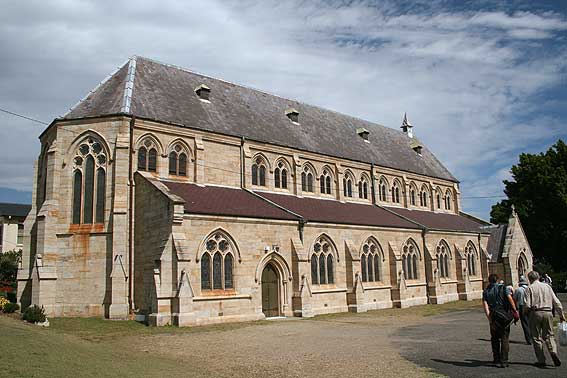
Historical and Technical Documentation by Kelvin Hastie
© OHTA 2005 (last updated October 2005)
The foundation stone of the first church building, a modest stone building with square headed windows, was laid on 20 March 1838 and it was consecrated on 28 June 1843. A design for a new chancel was prepared in 1875 by Edmund Blacket. The foundation stone of the present church, in the Decorated-Gothic style, 112 feet in length, was laid on 12 September 1884 and the building dedicated on 29 September 1886. The architects were Blacket Bros., as Edmund Blacket had died on 9 February 1883.
The nave and chancel of this large and imposing building, built in stone, are placed under a level roof ridge, resulting in a broad and spacious interior; the clerestoried six-bay nave and aisles converge upon the apsidal chancel without any structural division. There are elaborate and costly fittings including the carved Caen stone font and marble and alabaster pulpit, by Roddes of Birmingham (who also executed the pulpit at St Saviour's Cathedral, Goulburn), the Oamaru limestone organ screen and the Oamaru limestone and marble reredos, designed by A.C. Lee, of West Maitland. The chancel has a splendid tiled floor by Craven, Dunhill & Co. of Shropshire, there is a fine brass lectern, while the windows are filled with excellent stained glass, much of it by Messrs Lavers & Westlake, of London. This is one of the outstanding High-Victorian Gothic church interiors in the country. Unfortunately, the projected 180 ft high western tower and spire, which would have been a local landmark, have never been erected.
[1]
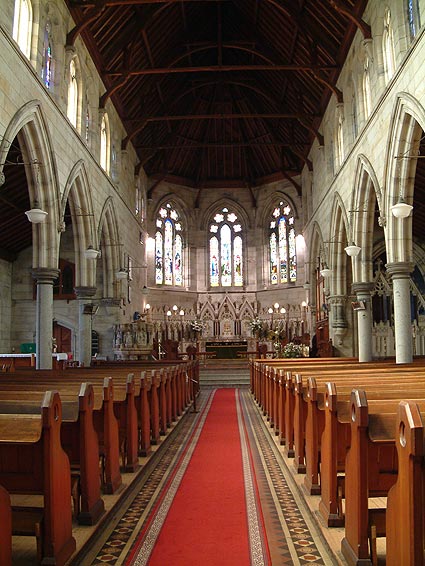
© PdL 2005
The organ in St Peter’s was one of five organs by the Willis firm sent to Maitland between 1867 and 1880; regrettably it is the only one playable today with its original mechanism, although one of the others – formerly in St John’s Catholic Pro-Cathedral and now in storage – had potential for restoration when last inspected. [2] Those built for St Mary’s Anglican Church and the Uniting (Methodist) Church, both dating from 1880, have been substantially altered through rebuilding and electrification. The 1867 instrument in St Paul’s Anglican Church was rebuilt in 1914 with tubular-pneumatic action by Charles Richardson, but has not been playable for over 30 years.
When the St Peter’s organ arrived in 1876, it was installed in the schoolroom, as the chancel and organ chamber of the Blacket building had not been completed. James Broderick, who had also installed several other organs in the district, later moved the organ to the church, where it was opened on 29 September 1886. [3] The instrument was cleaned and overhauled in 1916 by Charles Richardson and refurbished in 1962 by Arthur Jones (on behalf of J.W. Walker & Sons Ltd) while further work was undertaken in 1966 when the pedal compass was extended from twenty-five to thirty notes. In 1980 Peter D.G. Jewkes installed a new blower and electrified the pedal action. [4]
In 1981 John Stiller documented the organ, commenting favourably on its excellent tonal and mechanical qualities, including the preservation of hand-blowing. He noted that tuning slides had been fitted to all open metal and harmonic metal pipework, the pedal compass had been expanded, the original pedal action had been converted from mechanical to pneumatic and then to electro-pneumatic, a new pedalboard and bench had been supplied, and the keys had been recovered. [5]
In 1998 the organ was restored with financial assistance from the NSW Heritage Office: this was carried out by Ian D. Brown & Associates and the consultant was David Kinsela. The work involved the reconstruction of mechanical action to the pedal division and the completion of work in two stages, the first comprising the soundboards, pipework, swell box and façade pipes, while the second involved the bellows, console, pedal windchests and pipes. Two brass telltales were restored to the organ – one is located at the console, the other beside the pump handle. A new chest was made for the top five notes of the pedal stop, which retained its expanded compass.
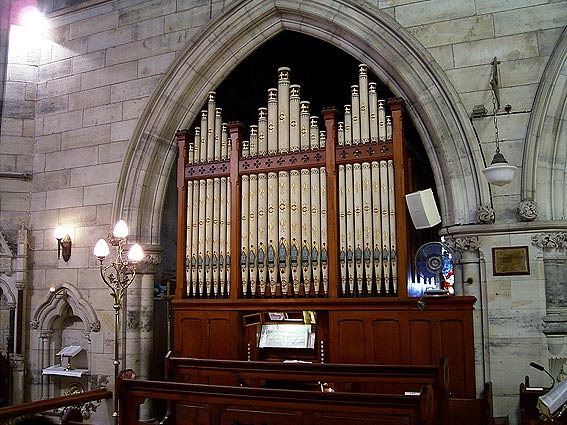
Henry Willis 1876 (2/12 mechanical)
| GREAT viii viii viii iv iv ii viii SWELL viii viii iv viii PEDALS xvi |
Open Diapason Claribel Flute Dulciana Principal Flûte harmonique Fifteenth Clarionet Diapason Swell + Lieblich Gedact Swell Gemshorn Swell Cornopean Swell Bourdon Pedale |
COUPLERS
Swell to Great
Great to Pedals
Swell to Pedals
Mechanical action throughout
Compass 56/30
3 composition pedals for Great
Hitch-down swell lever
No. of pipes = 634
Pitch a 1 = 445 at 18 0 C
Wind pressure (in 1981) 65mm (2 ½”)
+ C-B from Lieblich Gedact
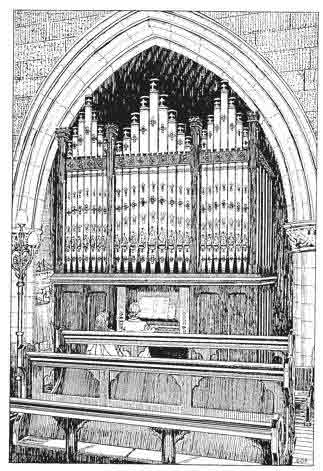
Henry Willis, London, 1876
St Peter’s Anglican Church, East Maitland
(drawing by Graeme Rushworth)
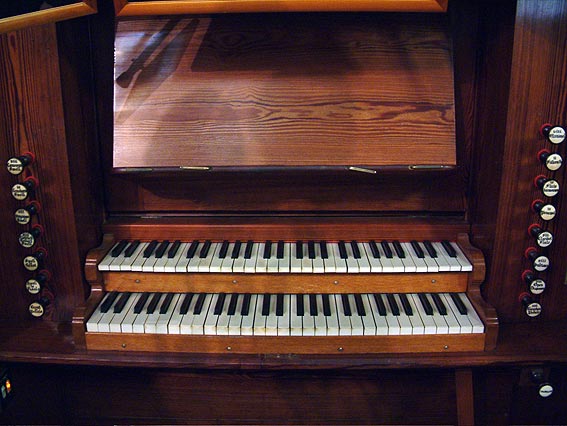

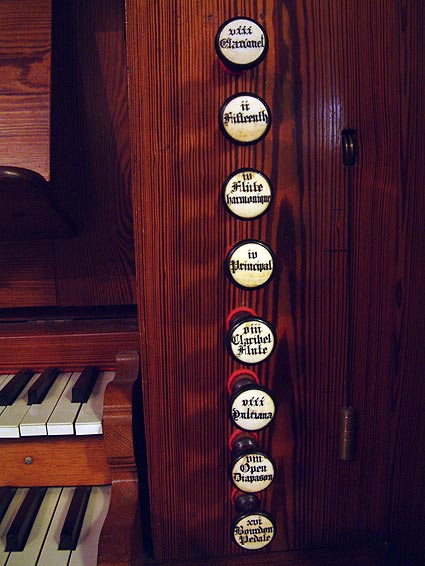
© PdL 2005
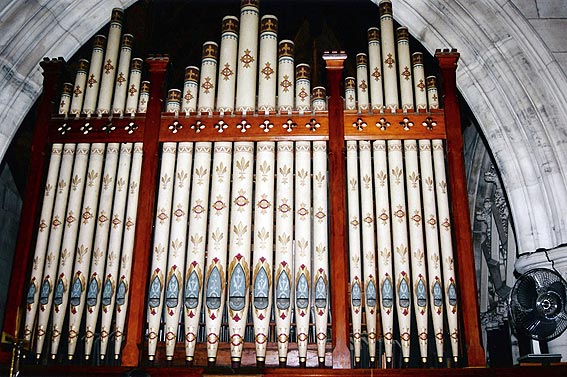
TB 1990
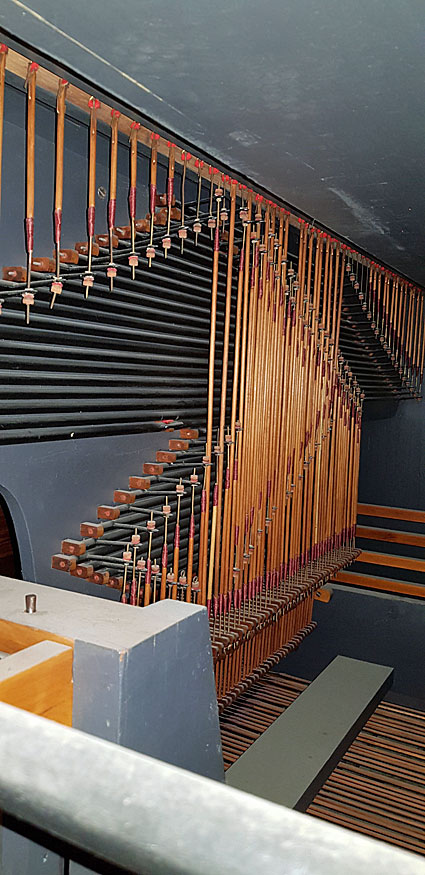
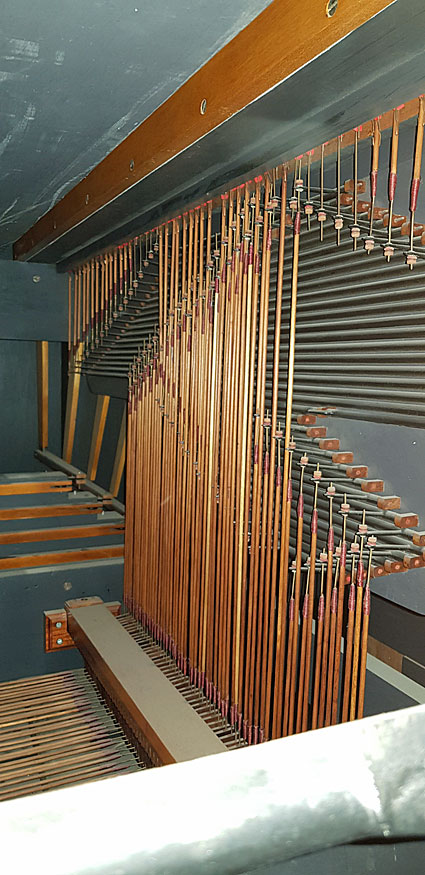
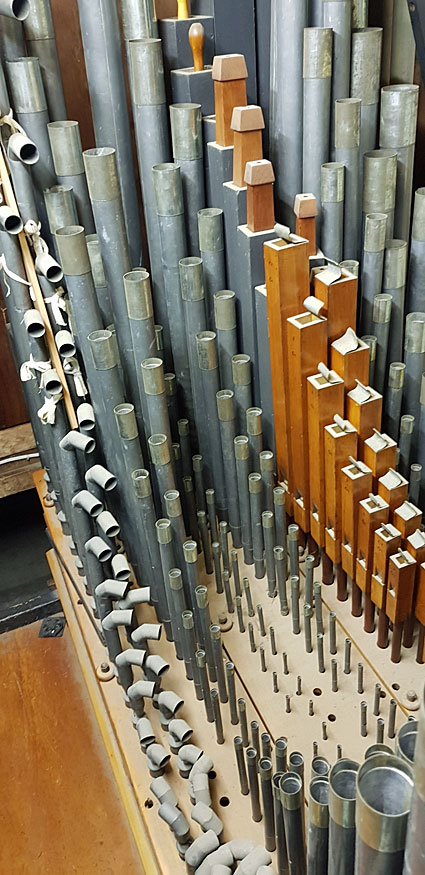
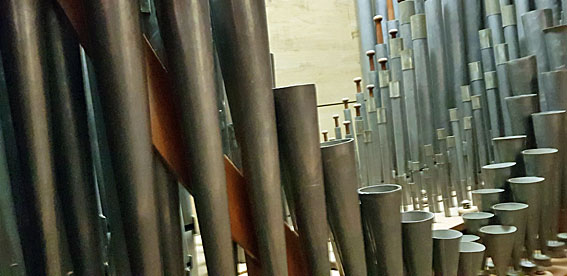

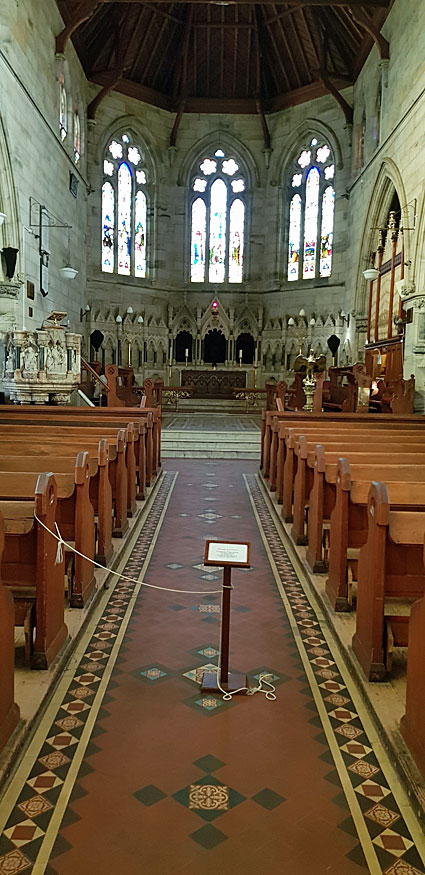

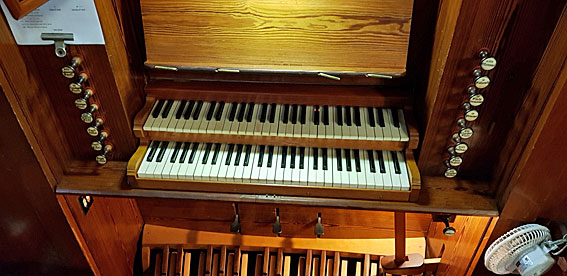
Photos above: Ian Brown (March 2021)
[1]
Joy Williams, The Anglican Church of St Peter Parish of East Maitland, N.S.W. Maitland: Dimmock's Print, n.d., and James Waddell, Centenary History of St Peter's, East Maitland, New South Wales. Maitland: Mercury Print, 1984.
[2] OHTA visited the organ on 30 August 1981, during its fourth annual conference.
[3] Rushworth, Historic Organs, 351.
[4] Ian Brown “Restoration of the 1875 Willis Organ at St Peter’s East Maitland – an organbuilder’s perspective”, Hunter District Organ Music Society Newsletter, 22/5 (August 1998): 10-17.
[5] John Stiller, “St Peter’s Anglican Church East Maitland NSW – Detailed Documentation of Pipe Organ built by Henry Willis 1875”. Organ Historical Trust of Australia, 27 May 1981. The specification is also from this source.